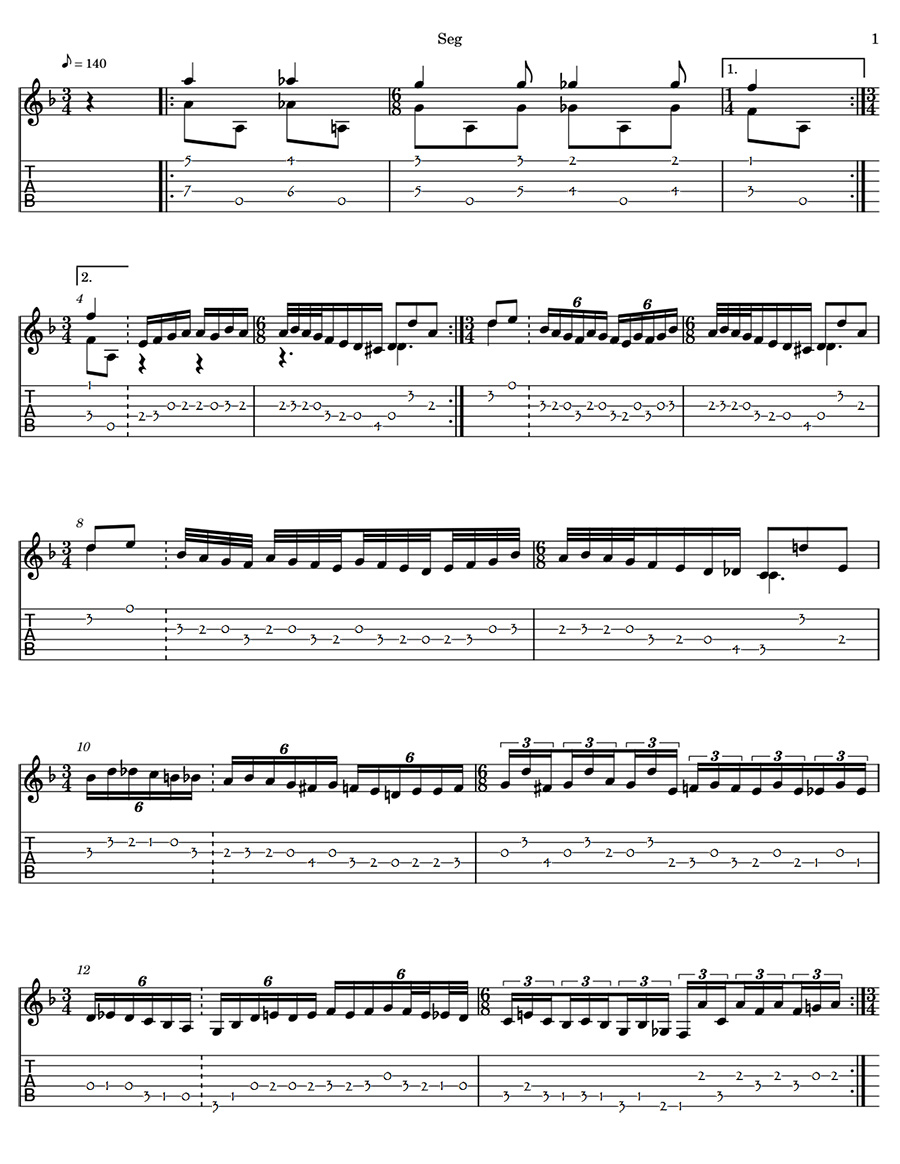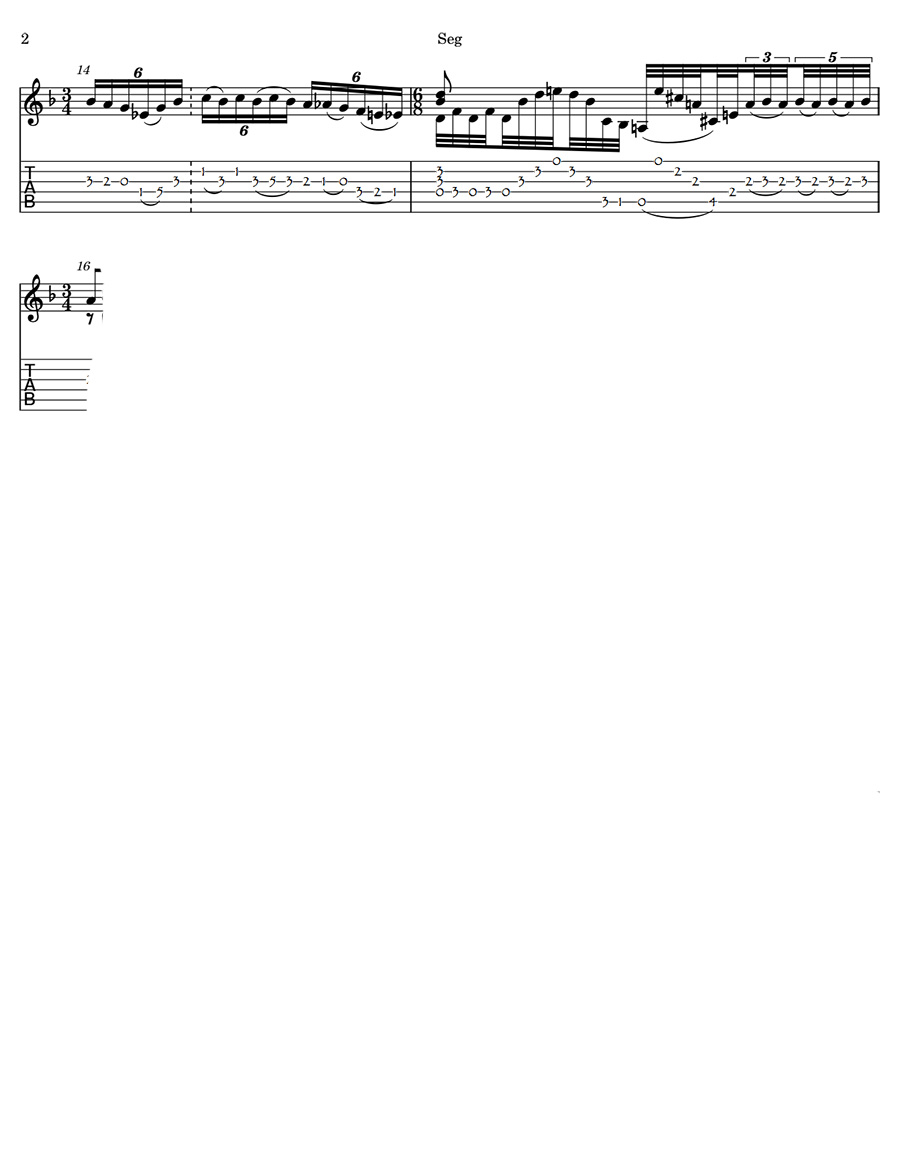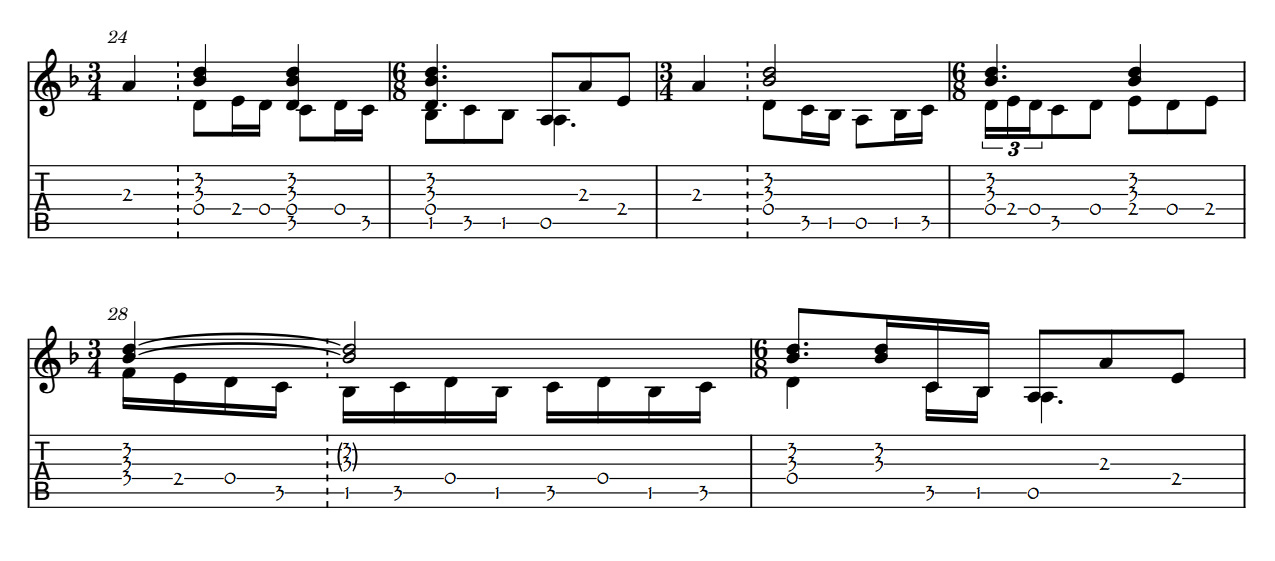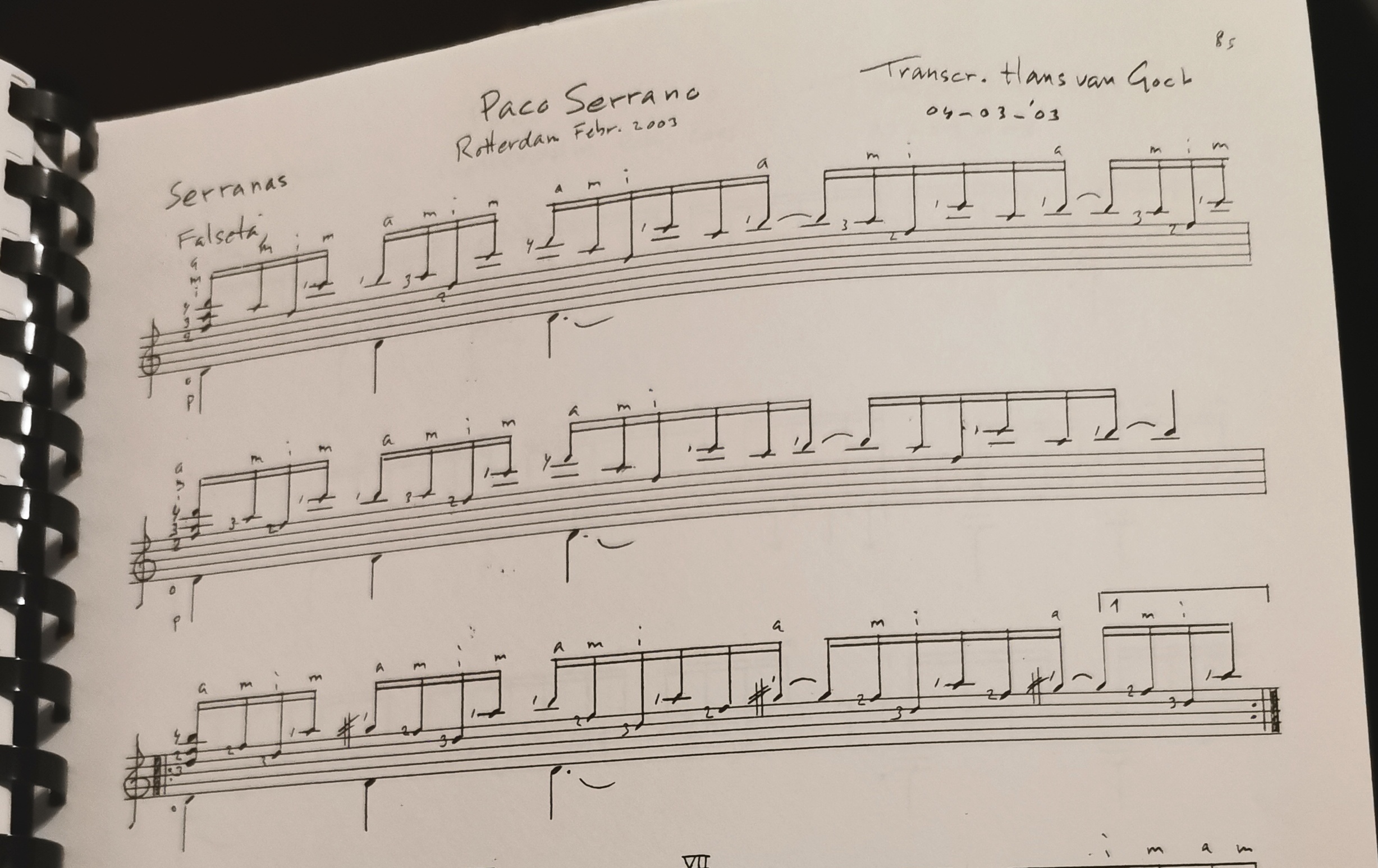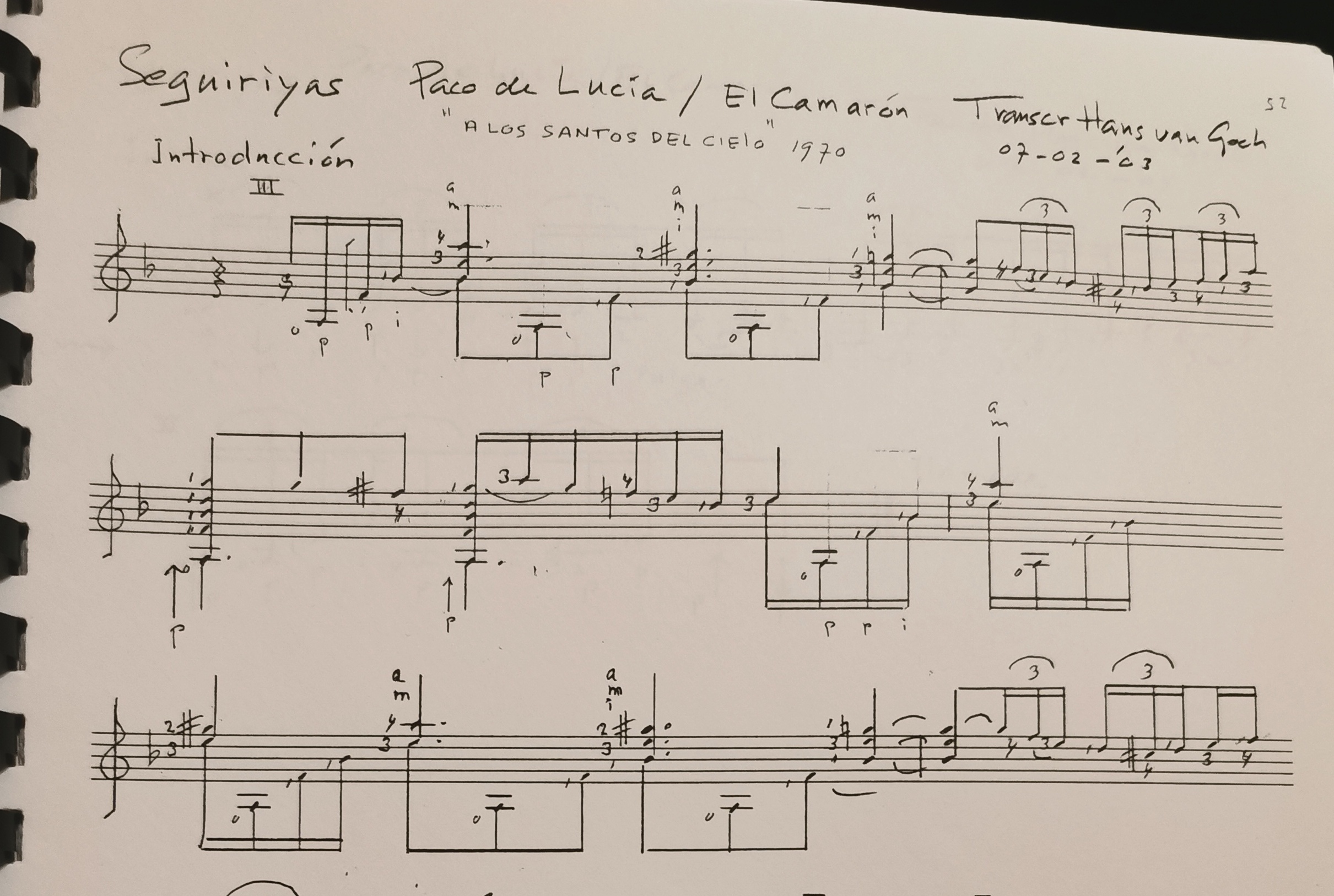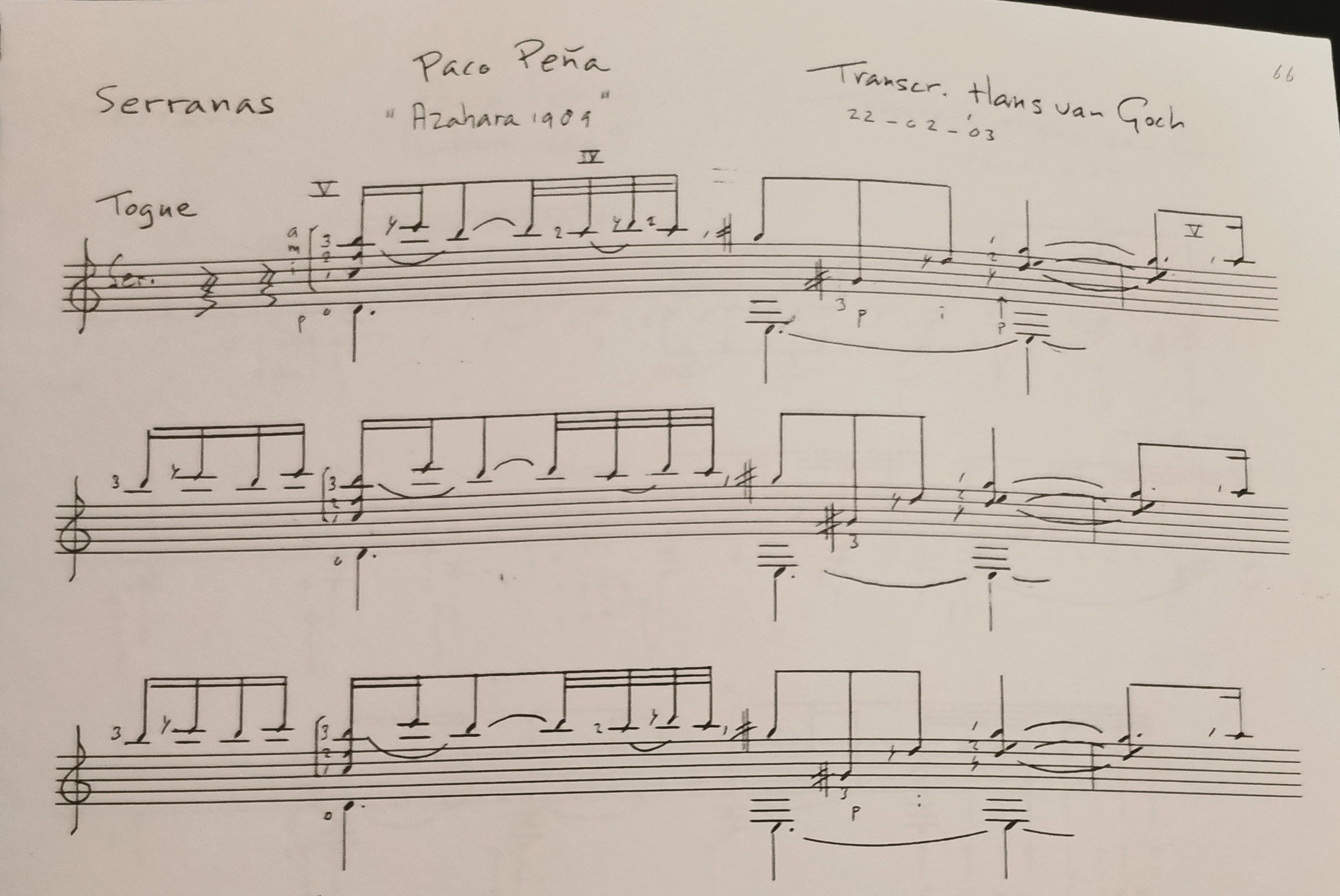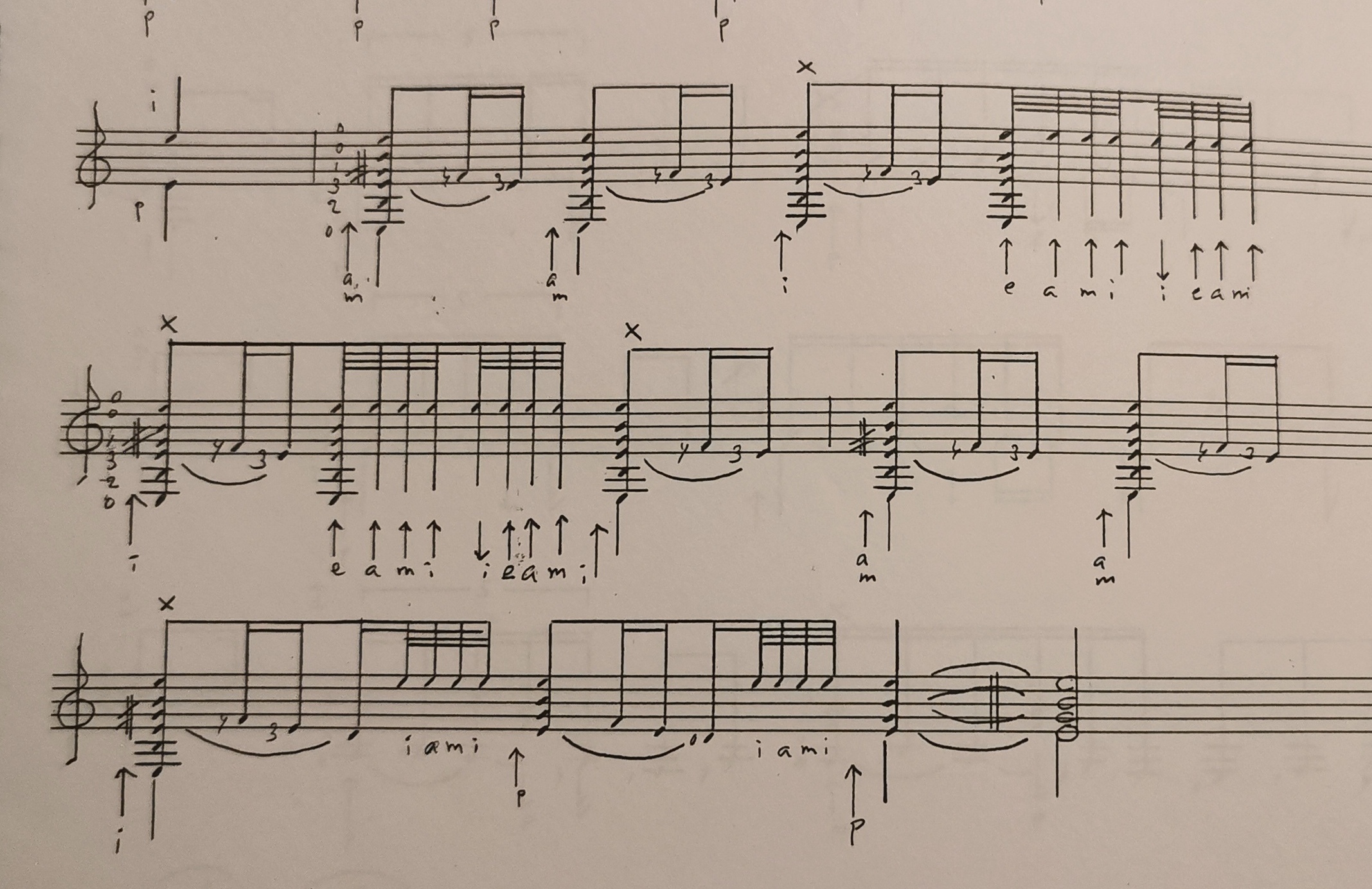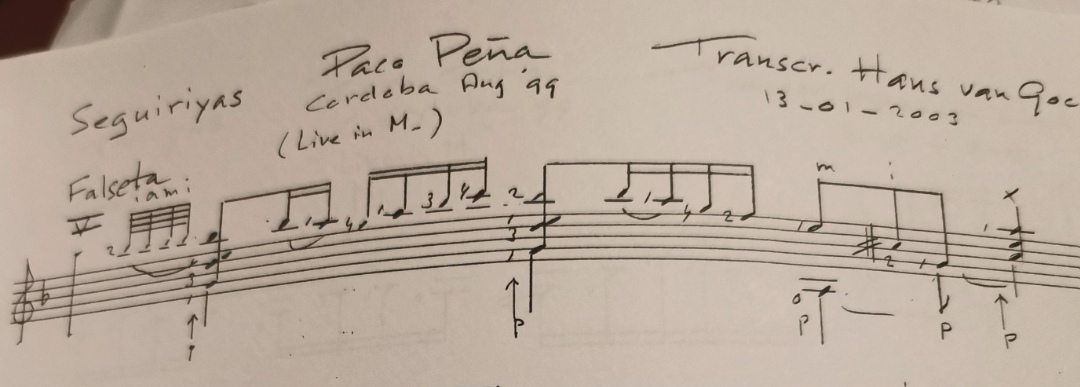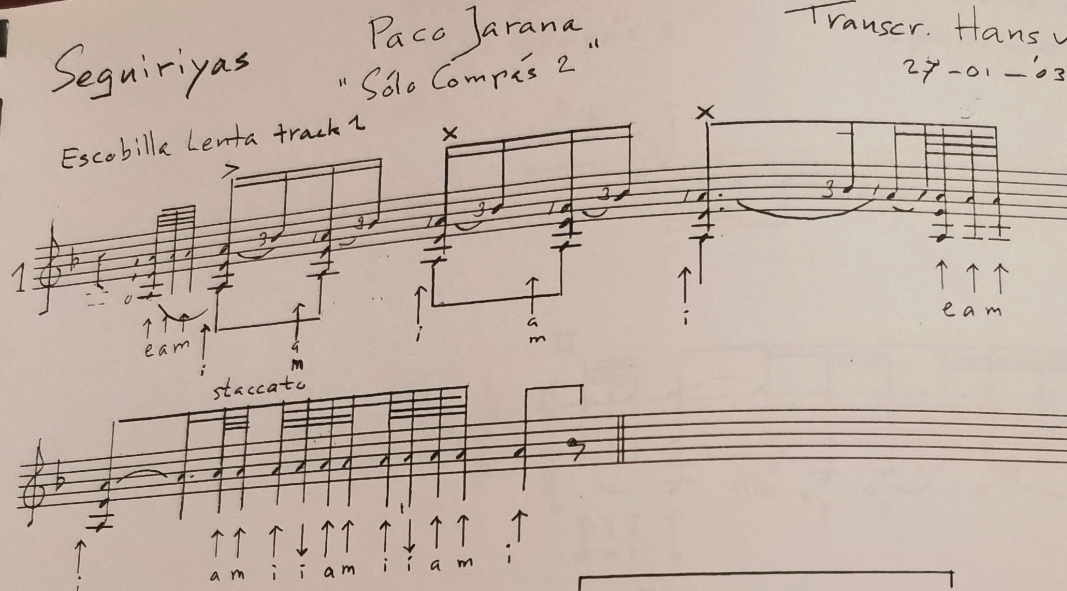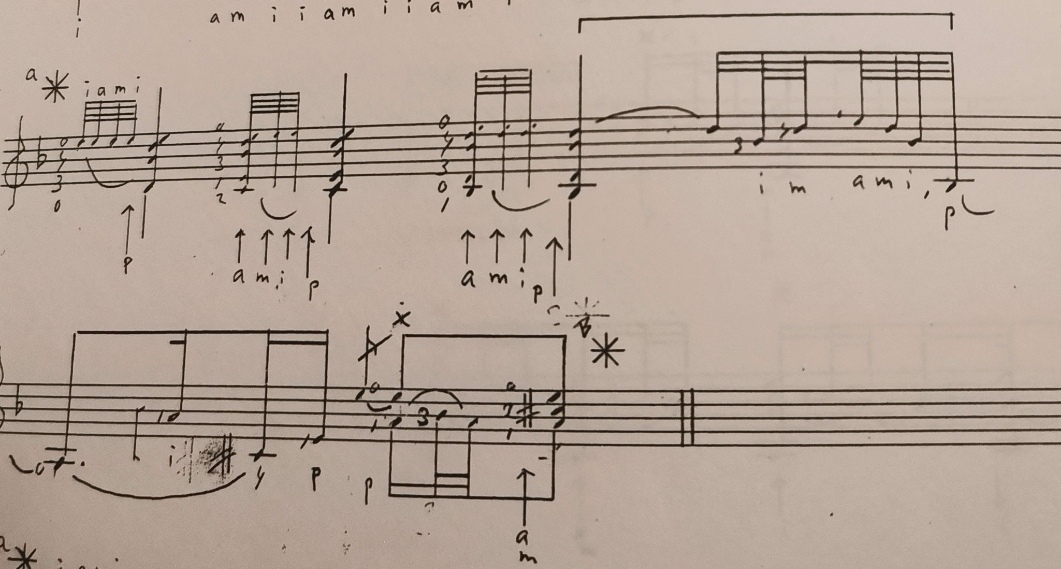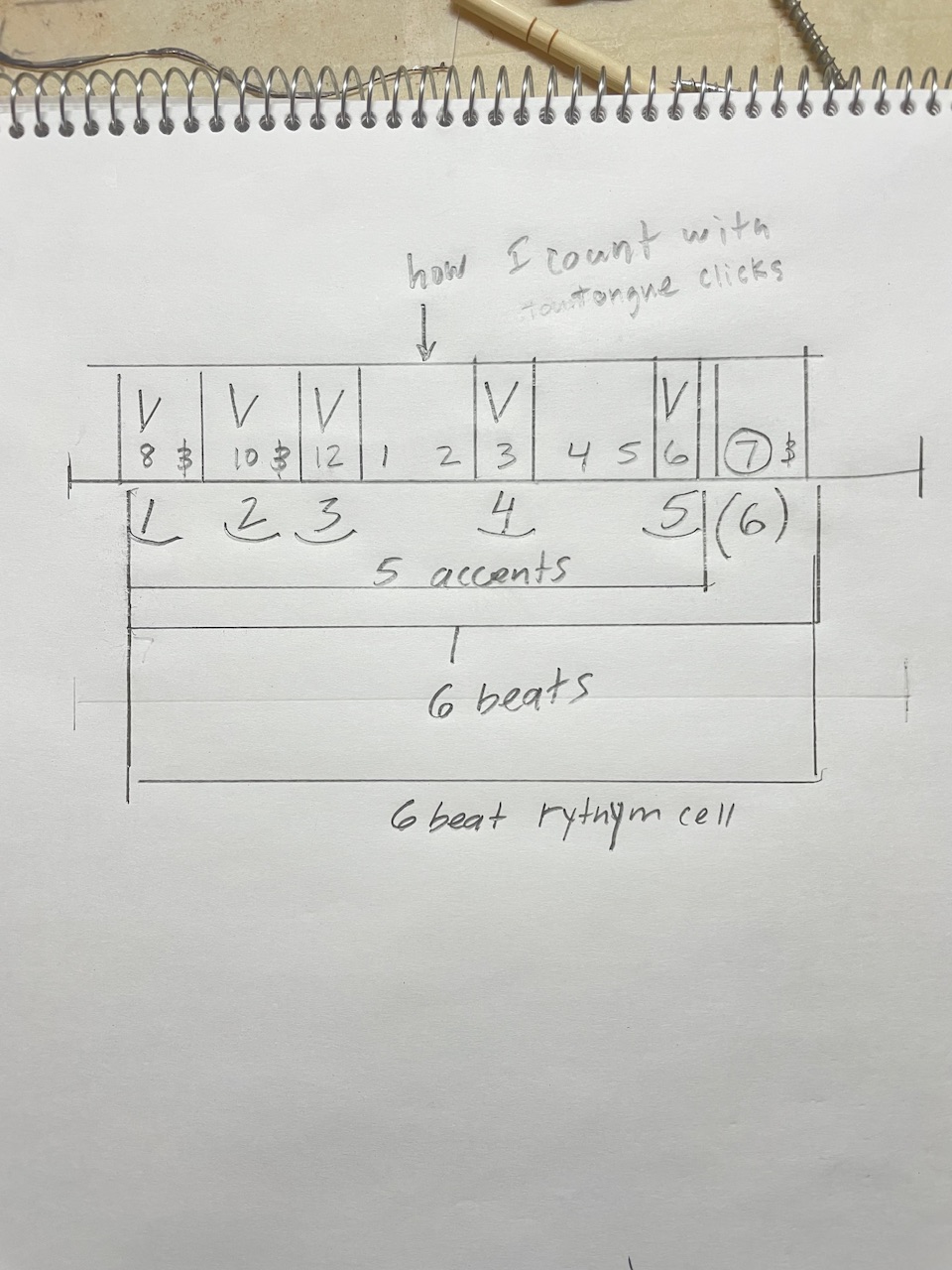|
Ricardo -> RE: Seguiriya /Siguiriya Metric Notation (Jan. 26 2025 17:33:50)
|
quote:
I have to edit my previous and this post. Your notation 6/4 time in measure 2 is mathematically correct if the 3rd beat was a dotted quarter note. You can correct that because the 5th beat (8th note triplet) can be seen as a quarter note.
That is false. You should edit your post to "oh sorry Mr. Marlow, you were correct all along". But, you don't get the math, but it is ok, it appears historically others made the same error. There are no triplets as you describe. They are simply being beamed in a group of 3 but are called "straight 8th notes". 7/8 does not have any triplet but you are defining accentuations by beaming the notes in a certain way. 6/8 is a convention for feeling TWO beats subdivided as "triplets" but technically they are not triplets either. If you write 2/4 then specific triplets, the sound is the same as 6/8. The 6/8 is a COMPOUND meter for this reason. It is a convention for ease of reading. People want to mix compound meters and simple meters and this is not really how it should be done. IN the past it was not done. It is a modern convention devised by the rhythmically challenged.
The simple thing to understand with the 6/4, and the single module others are pointing towards, is nobody has the "right" to claim it is something different than what it mathematically is. Like you can pretend it is not 6/4, but this is simple math here. Like everyone is suddenly Terrance Howard trying to reinvent 1x1 etc. Call me a "guiri" or nerdy, I don't care, it is what it freaking is. 4 out of 5 accents are expressed by a simple quarter note pulse and its subdivisions. The issue, the "hemiola" etc. is simply due to the count 4 accent. It is the fly in the ointment of otherwise simple rhythmic phrasing.
People are so far ignoring my Sevillanas connection because the simple 3/4 metric used there can't possibly relate to the deep complexity of siguiryas right? Well, Diego is simply doing it. The count 4 accent is not a strong beat it is the same as an up beat chord change as in fandango and Sevillanas. IN fact when we play por medio fandango (and I have that paco tutorial explaining this) and you do the resolution phrase, they are basically playing siguiriyas right there. The thing is, is that this count 4 issue is not expressed EXACTLY the same way. But all the "history" and the confusion of translation, etc., is right there, it is not as complex as people want to believe.
D,D C,C,Bb,Bb, G,G,A,A. That is ten notes. Two more makes the "remate". Siguiriyas is simply this:
D,D,C,C,Bb,Bb, G,A,A,A. The A comes half a beat early on "count 4". That is ALL that is different. There is no NEED to change the metric for that simple thing. But they do and it is now convention that we see various "confused" methods.
Now if people don't play fandango or sevillanas much they won't get this simple thing I guess, which is fine. It is not a big deal. Like if we are translating a language there are 3 types. 1. It is literal missing nuance. 2. It is plain wrong. 3. It is exactly the meaning meant to be conveyed. That is all music transcription is as well.
About the 12/8 it is also a method already explored as well. Notice one meter captures the hemiola thing just fine, however, in modern terms it still looks funny because we use the compound meter just like 6/8, as "triplets" in 4 beats.
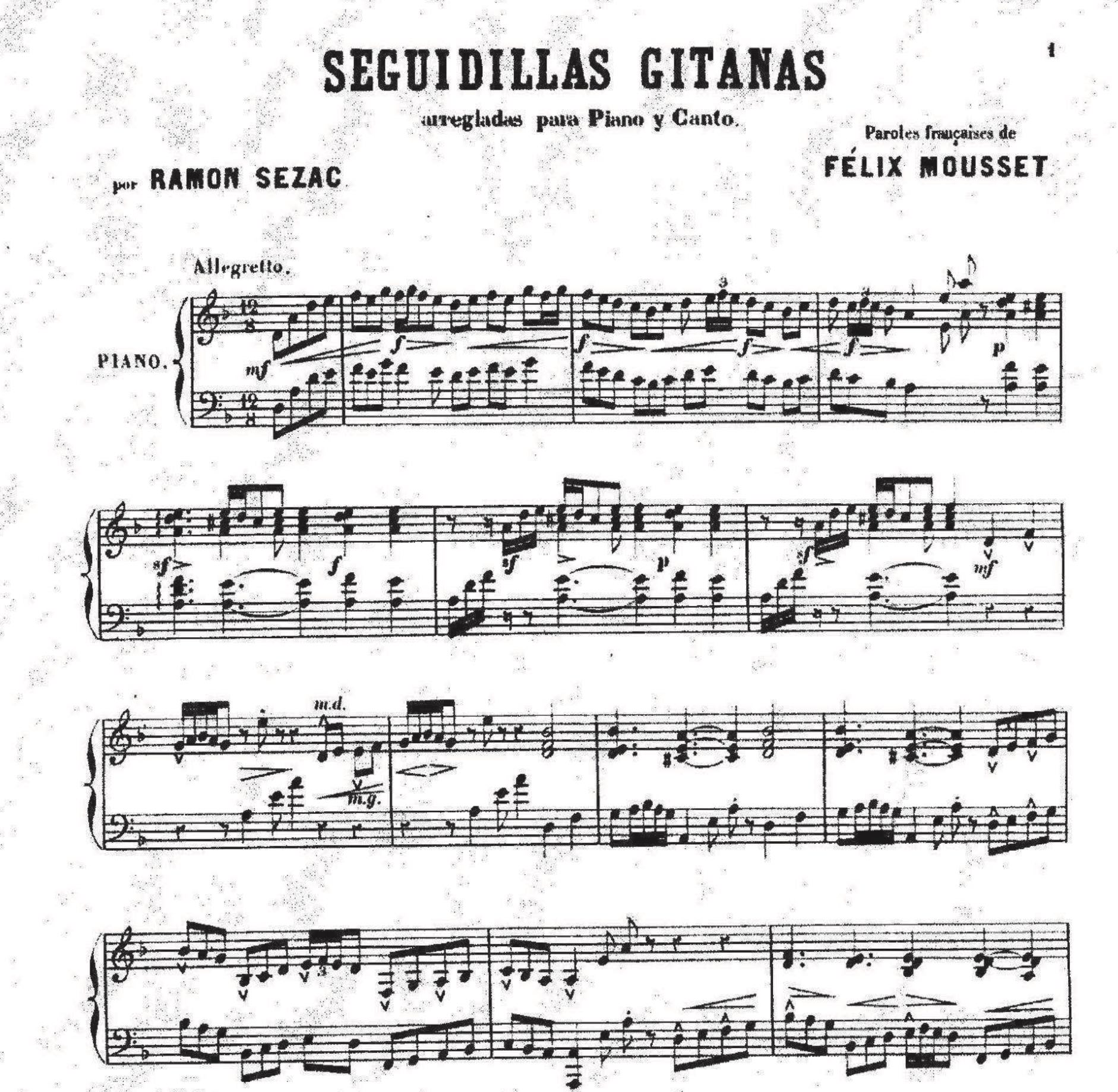
Images are resized automatically to a maximum width of 800px
|
|
|
|
